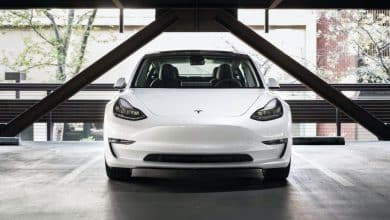Mercedes-Benz: 1,000 kilometers at the wheel of the electric VISION EQXX concept

A few months ago, during the Consumer Electronics Show (CES), Mercedes Benz unveiled an electric concept called VISION EQXX. This one especially emphasized the design inspired by the Art Deco era with its long and elegant rear end reminiscent of the large sports cars of the 1930s.
But under its pretty body was the real news: a battery using LFP technology and capable of providing a range of up to 1,000 kilometers, a feat that the manufacturer has just accomplished in real life.
Indeed, Mercedes-Benz engineers took to the road behind the wheel of the EQXX. They set out from Sindelfingen, Germany, and crossed the Alps in northern Italy to end their journey in Cassis on the French Riviera. The outside temperature during the adventure fluctuated between 3 and 18 degrees Celsius. In total, they would have traveled 1,008 kilometers at an average consumption of 8.7 kilowatt hours/100 kilometers. When they arrived, the on-board computer showed a remaining range of 15% or 140 kilometers.

The future of the electric car is emerging
Such an exercise allows us to get a taste of next-generation electric vehicles that would be able to travel well over 500 kilometres, even in colder temperatures. One of the secrets to this feat lies in the battery chemistry. That of the EQXX uses LFP technology (for lithium-iron-phosphate), that is to say that it is composed of lithium phosphate instead of cobalt or nickel.
Thanks to this technology, Mercedes-Benz can develop a battery whose capacity is calculated at 100 kilowatt hours, but which is considerably less bulky. For reference, the EQXX Concept’s battery has nearly the same capacity as a Mercedes-Benz EQS, but is 50 percent smaller (200 x 126 x 11 centimeters) and 30 percent lighter (495 kilograms).

Aerodynamics remains very relevant
The other element that allows the EQXX to be so economical is its aerodynamics, visibly improved by the shape of its body. Mercedes-Benz boasts a drag coefficient of 0.17, a figure that surpasses the EQS sedan with its coefficient of 0.20. Additionally, the EQXX concept sets the benchmark for battery-to-wheel fuel efficiency with a 95% rating.
Inspired by the manufacturer’s research in Formula 1, the Mercedes-Benz VISION EQXX concept demonstrates the rapid evolution of batteries in electric vehicles and shows how much they will soon be more efficient than thermal vehicles.
Mercedes-Benz therefore intends to use LFP technology in its next electric models, by 2024. As for the production of the VISION EQXX concept, nothing has yet been announced on this subject. Will this magnificent sedan become the manufacturer’s next flagship model? To be continued.












